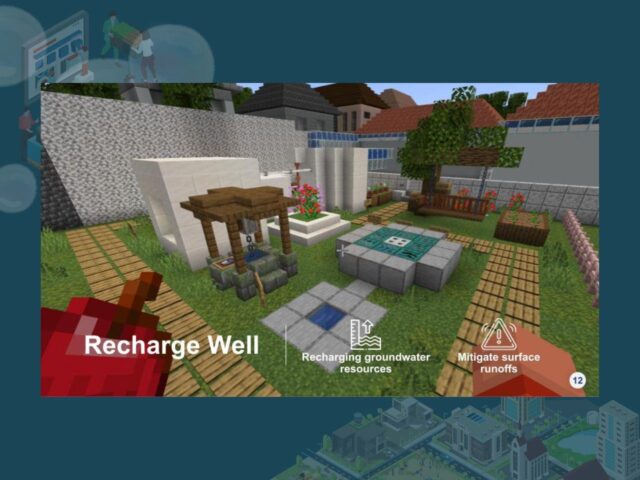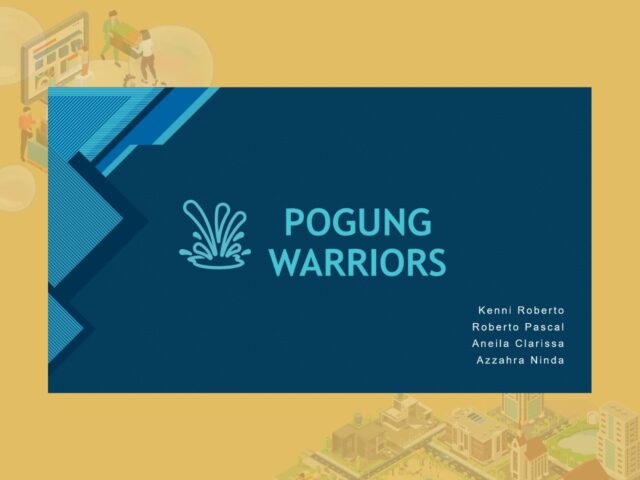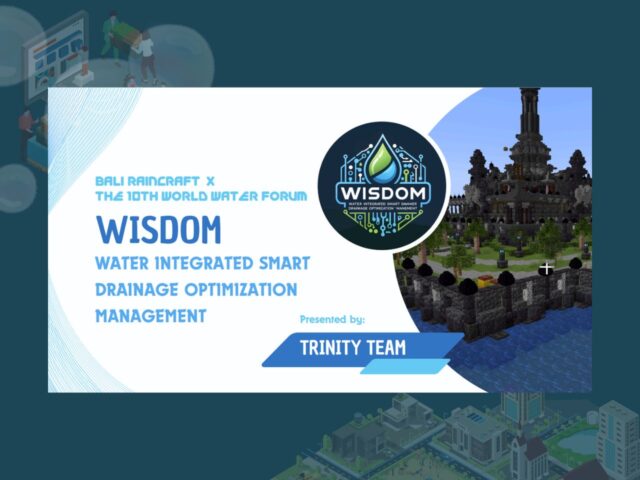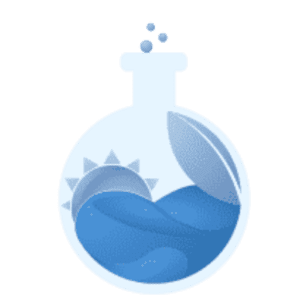Team Introduction
Team Aventura consists of four members: Elvira, Naufal, Shafira, and Shana. The name Aventura derives from the Italian “a venture,” meaning fortune. We were matched together into one team during the Bali Raincraft x The 10th World Water Forum program. As we come from different backgrounds: civil engineering, landscape architecture, environmental engineering, and urban and regional planning, we are able to look at things from different perspectives to incorporate into our program.
Problem Statement
In Bali, water holds significant cultural and religious meaning. Regrettably, there have been many reports of water-related issues in Bali, including flooding and saltwater intrusion which we chose in this case for further analysis. The key problem of these issues is groundwater depletion, caused by extensive use of groundwater, groundwater not being replenished, and lack of absorption area.
Proposed Solution
Our proposed solution is an integrated nature-based solution. It comprises rainwater harvesting and recharge wells built in residential areas (specifically near the kindergarten area) and a constructed inland wetland situated in Lapangan Puputan Renon.
a. Rainwater Harvesting

Rainwater harvesting acts as an alternative water resource for the surrounding community, and the whole site is built openly to serve as an educational method for visitors. The rainwater is collected through gutters towards a water storage tank. When the tank is too full, it will go down towards the recharge well. Water that is going to be used for the community will be treated first using sand filtration, RO membrane filtration, and disinfection.
b. Recharge Well
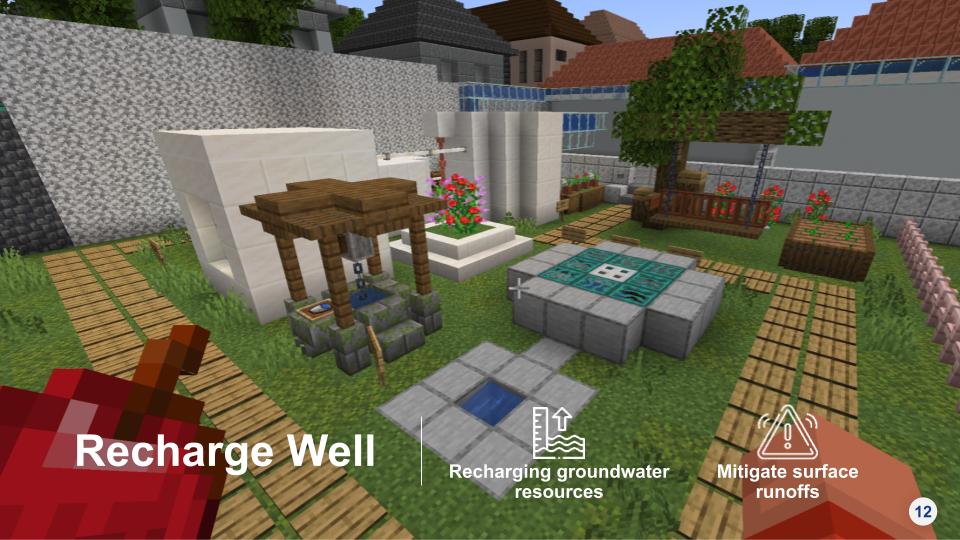
The recharge well’s function is to recharge groundwater, overcoming the impact of massive underground water extraction from drilled wells. The water source for the well comes from our rainwater harvesting. The well has holes to allow runoff water to be filtered directly, and it is dug deep so that it reaches underground aquifers. At the bottom of the well, there is also a filter to control water quality.
c. Constructed Inland Wetland
Our constructed inland wetland encompasses two components, bioswale and rain garden.
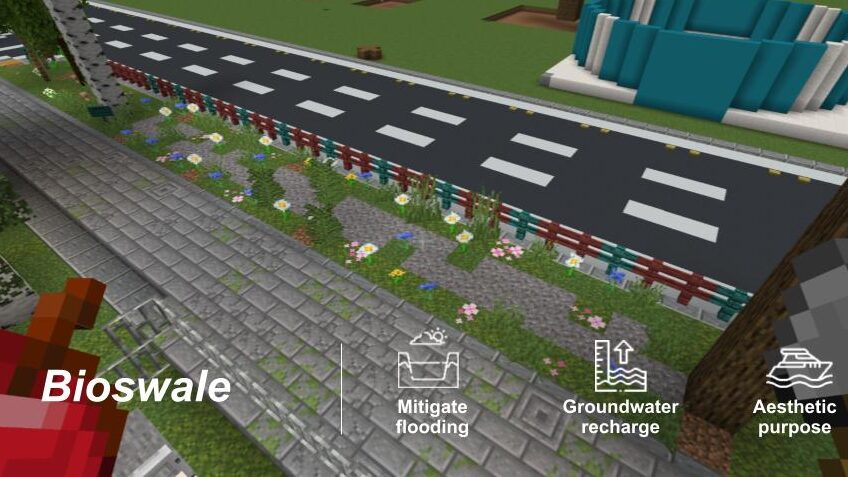
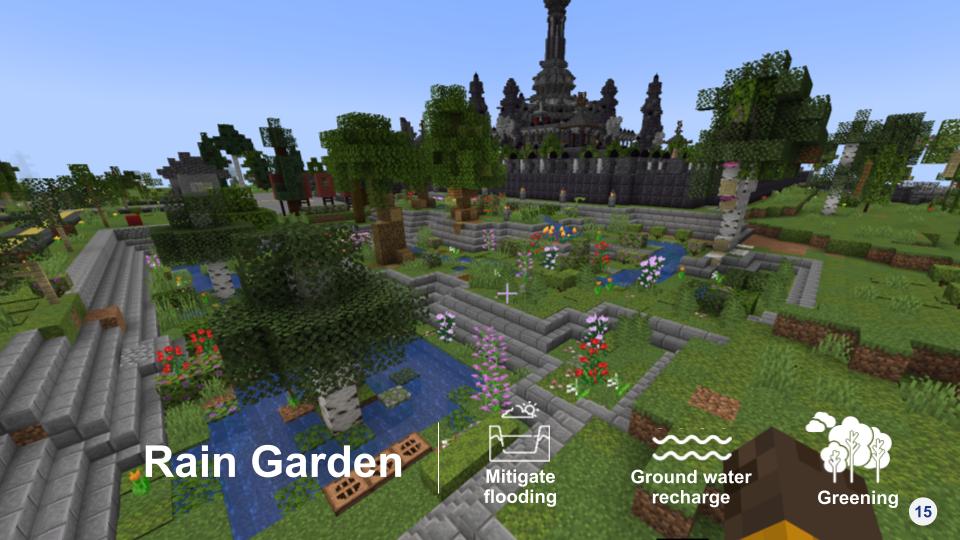
- Bioswale
A bioswale is a strip of vegetated area that redirects and filters stormwater for flood risk mitigation in urban areas and water collection. Located parallel to the main road around Lapangan Puputan Renon, it allows the water to infiltrate into the soil and filter the pollutants. It also adds aesthetic and recreational value, improving the quality of life for local communities and tourists.
- Rain Garden
A rain garden is a garden specifically designed to collect rainwater runoff. The water is then absorbed by the soil, which serves as a filter for pollutants carried by rainwater. The water absorbed flows into a tank, is pumped to a water filter to improve water quality, and is then distributed to public facilities.
See our video below for further details of our solution:
Expected Impacts
The main benefit we can provide to the environment with our innovation is improving water quality. With our integrated nature-based solution, rainwater that previously caused flooding can be collected and utilized by the community, and the groundwater can be slowly replenished. We also recommend ensuring program sustainability by implementing the Penta-helix collaboration concept and optimizing roles between key stakeholders.
Additional Context: Project Timeline and Long-term Vision
If we were to implement the solution in the real world, we would first build the rainwater harvesting system and recharge well, which will be constructed near the school as the pilot project. At the same time, a capacity building program will be conducted to raise awareness of the neighborhood and education for the students. Next, the pilot project of a constructed inland wetland that consists of a rain garden and bioswale will be built. This will reduce the negative impact of the flooding as a long-term effect. After the pilot project is successful, the interventions can be implemented in another site. These solutions will foster climate and water resilience not only for Denpasar but also for Bali’s sustainable future, aligned with the ambitious goals of the SDGs by 2030.
See more of our solution below:

Written by (in alphabetical order): Elvira Apriana, Naufal Widyadhana A.K., Shafira Rafayola, Shana Dianra Ayasha

